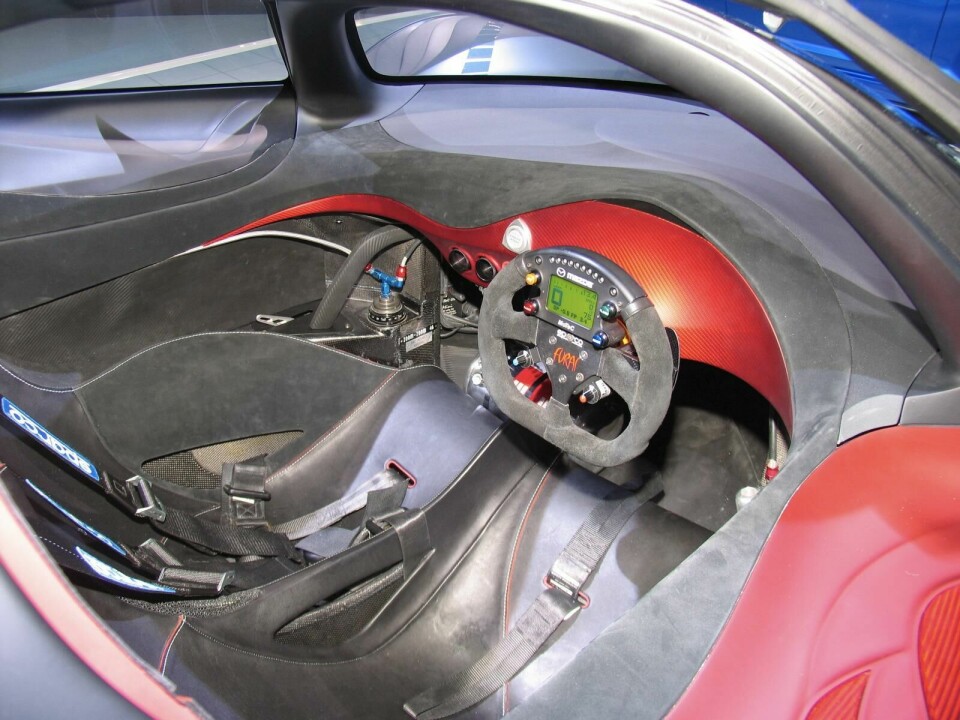
Design review: Mazda Furai concept
The Mazda Furai concept was developed at the Mazda North American Operations design studio
The Furai was one of – if not the – most admired concept cars at the 2008 Detroit Motor Show. Arguably the Taiki, first shown in Japan in 2007 but making its North American show debut on an adjacent display, might have eclipsed its show car presence for those who weren’t in Tokyo.
Designed under the direction of Franz von Holzhausen, the then director of Mazda Design North America, and project manager Ken Saward in the California-based Mazda design studio, the Furai featured Mazda’s ‘flow’ design language that was first seen on the original Nagare displayed at the LA Auto Show in 2006. That concept was also designed by Franz and his team on the West Coast.
Interestingly, there are some similarities between the Furai’s profile and the McLaren F1 prototype by Peter Stevens. The proportions, graphics, recessed door surface with air channels and the small top of A-pillar mounted rear view mirrors are all reminiscent of the McLaren. On the Furai, these minute mirrors sweep back to form the cant rails which taper inwards to the rear of the narrow cockpit.
The Furai owes much of its impressive drama to its race car proportions, which many designers we spoke to felt distanced the design further from production application. But in celebrating Mazda’s race car and rotary engine heritage, and in delivering such a unique supercar concept, the Furai is as impressive as it is apt.
As a running prototype powered by a three-rotor rotary engine delivering 450hp the car is based on an open-cockpit US Le Mans race series Courage C65 and inherits its proportions and package. In this sense the design is superficial. But in other respects the design is less superficial than its forbears: for the first time the flow lines run from textural through to prominent surface form and on to the main feature lines and volumes. In previous Nagare concepts they formed the core volumes and some surface textures only.
Another way in which lead exterior designer Bernard Lee and exterior designer Carlos Salaff have developed the ‘flow elements’ to differ from the previous ‘flow design’ Mazda concepts, is the way they change character along the car. They start calmly at the front and then, reflecting the way air turbulence grows towards the rear of the car, become increasingly energetic flow lines towards tail. As Teresa Spafford, lead designer of colour and materials, said: “We wanted it to look progressively like a storm towards the rear of the car, hence the use of more emphatic forms and more red”. This is most apparent on the rear deck over the mid-mounted engine where flow lines and large perforations with red on their inside edges break up the core surface.
The Furai also progresses the ‘flow’ form language in the way it uses LEDs to highlight surface creases and create relief adding depth to the surfaces. This is particularly evident in the side aspect, where flow lines pull up through a receding door surface as they run rearwards into the side air inlet vent. This is then complemented by a red painted surface on the inside lower surface of the separate outer rocker, reflecting a slight red glow onto the inner rocker at the base of the car sides – a free bit of subtle drama.
The interior, designed by Yasutake Tsuchida, is minimalist, but the ingredients are very race car: two slim seats formed on one carbon fiber buck; a steering wheel (devoid of an airbag) on which the controls reside; and the bare minimum of controls feature in the diminutive cabin. The silver carbon weave IP, highlighted by a red tint, is a subtle but intriguing innovation, which flows around the two occupants and into “Dolphin Suede” covered areas at the sides and at the leading edge of the IP. This is the first time this material has been used in car design. “It feels like stroking a Dolphin,” Teresa Spafford told us - or at least like stroking the finest, smoothest suede imaginable.

Another notable feature on this boutique racer, invented by Swift Engineering who put the car together, is the ‘air fang’ that sits behind the cockpit and above the boundary air layer to pull air into the engine.
As the fourth Mazda show car in the last 12 months - “That is a lot of concept cars for such a small brand!” enthuses Franz von Holzhausen - the Furai is indicative of the automaker’s intentions to develop a new design language; placing more faith in design to deliver commercial success than most other car companies. This faith perhaps stems from the way the previous generation Mazda design language - established under then design director Moray Callum with the 2, 6, 3 and 5 - helped double annual sales in Europe between 2001 and 2006 and grew global car sales by 50% in the same period.
So whilst the Furai is superficially a race car clothed in finery, it is a concept that develops the ways in which ‘flow design’ is expressed, and is a further commitment from Mazda to deliver this new design language in a production design soon.













